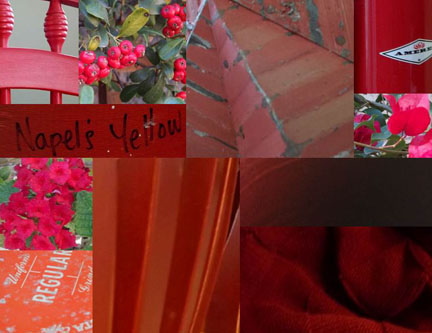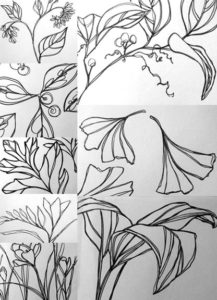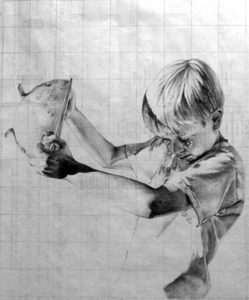I spy with my little eye…
I worked frantically heading into Thanksgiving so I could get a bit of inventory delivered the week before the holiday. Now, as the semester winds down, I find myself in a strange lull at the studio. It’s not that I don’t have work to do, I just don’t have the days (consecutive days) available to see the process through. I’ll likely get new work made in the next couple of weeks, leaving it to dry over Christmas.
So then, in the absence of a hectic studio schedule, I’ve been tweaking and rewriting my Spring semester Sculpture class. Over the years that I’ve taught Three-Dimensional Design and now Sculpture, I’ve observed students struggle to visualize their ideas beyond the two-dimensional plane.
“If I can draw it, why can’t I sculpt it?”
I believe visualization begins with seeing (go ahead and laugh a little at that sentence…read it again if you must). Perception. We miss a lot because we process quick visual cues and then just fill in the blanks. Our ‘filling in’ isn’t always accurate and often void of details. We create a good, general image in our head and can probably provide an adequate description. However, if we really (really) saw, we’d be amazed at what we gloss over.
While searching for some inspiration, I read an article about jump starting the creative process. Several artists were asked what they do when they need a creative push. One artist suggested choosing a color and then taking photos of that color in any shape, shade or texture.
I thought this might be fun to try, so I grabbed my point-and-shoot to record the color red for the next half hour.

When I looked at my images I immediately noticed that I kept to a fairly narrow value range (no pinks here). I can see how this exercise could be expanded (hmmm…thinking, thinking). Just allowing time to thoroughly seek out a color would begin to push students. In fact, well after my allotted half hour of searching for red, I caught myself being drawn to the color; accompanied by a mental note that I’d seen it (Where’s Waldo run amok!). This exercise sparked a renewed awareness of color, surface, texture and even shape.
 An exercise in perception that I find myself returning to is creating line drawings (a collection, actually) in my sketchbook for the surfaces of functional work. These drawings help me see form. The simple visual cues on the two-dimensional plane suggest spacial relationships as well as speak to the form of the clay.
An exercise in perception that I find myself returning to is creating line drawings (a collection, actually) in my sketchbook for the surfaces of functional work. These drawings help me see form. The simple visual cues on the two-dimensional plane suggest spacial relationships as well as speak to the form of the clay.

The line drawings are an abridged version of the images I draw on paper (really lousy paper) for my drawings on clay. I develop a detailed image on paper – far more detail than I will ever be able to translate onto the ceramic surface. This might seem like a waste of time and energy; creating such finished sketches. But, they help me to really (really) see. Develop my perception. Jump start the creative process.
2 Comments
Comments are closed.
Nicely put Beth. You might guess how i feel about seeing….I write about this a lot. When one really (really) learns to see, there is never a dull moment again.
When I want to test whether or not I am really seeing, I take a walk and determine if I am seeing everything that I pass, or does it fade and as you say become another part of my “perception”. Good seeing Beth.